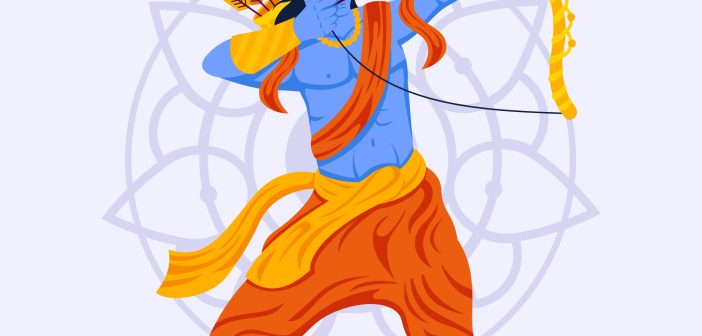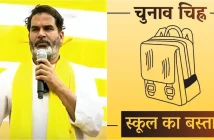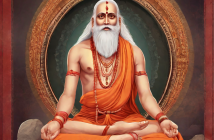Centuries of yearning culminated in a day of divine consecration. Witness the highlights of the Ayodhya Ram Mandir Pran Pratishtha ceremony, a historic moment etched in faith.
The much-awaited Pran Pratishtha ceremony of the Ram Mandir in Ayodhya occurred on January 22, 2024, marking a historic and momentous occasion for India. The Pran Pratishtha ceremony for the Ram Mandir in Ayodhya took place between January 17 and 22, 2024. The historic inauguration, including the Pran Pratishtha ceremony, occurred at 12:20 pm on January 22, 2024. A limited number of invited guests, including dignitaries, politicians, and celebrities, were present.
Events at Ram Mandir Pran Pratishtha Ceremony
10:55 a.m.: Arrival at Ram Janmabhoomi site
11 a.m.-12 p.m.: Reserved
12:05-12:55 p.m.: ‘Pran Pratishtha’ rituals begin
12:55 p.m.: PM Modi to leave the consecration ceremony venue
1 p.m.: Arrival at a public ceremony
1 p.m.- 2 p.m.: PM Modi to attend a public event in Ayodhya
2:10 p.m.: Visit to Kuber Teela. Arrival at a public ceremony
The Pran Pratishtha ceremony at the Ayodhya Ram Mandir, held on January 22, 2024, was a significant event marked by various rituals, the presence of prominent personalities, and cultural significance. Here are the highlights and key facts about the ceremony:
- Ceremony Completion Time: The Pran Pratishtha ceremony was completed by 12:20 pm on January 22. The auspicious muhurta (time) for the idol installation was determined by astrologers and fell between 12:20 pm and 12:45 pm. The Pran Pratishtha ceremony began on January 17th with a series of rituals, culminating in the idol installation on January 22nd.
- Pran Pratishtha: The central ceremony involved the infusion of the divine life force (prana) into the idols, making them living representations of the deities.
- The ceremony marked the culmination of a decades-long movement to construct a temple at the birthplace of Lord Rama, a revered Hindu deity.
- On Thursday, amid the resounding chants of “Jai Shri Ram,” the idol of Ram Lalla was reverently placed within the garbha griha (sanctum sanctorum) of the Ram Mandir. The installation ceremony of the idol spanned approximately four hours, culminating in the influential entry of the Ram Idol into the Ayodhya-based Ram Temple, which occurred shortly after 12:30 p.m.
- The ceremony was performed by a team of pundits (priests) following strict Vedic rituals and traditions, making it a deeply spiritual and auspicious occasion.
- Religious rituals: The ceremony involved a series of elaborate Vedic rituals performed by a team of priests. These rituals included the installation of the idols of Lord Ram, Sita, Lakshmana, and Hanuman in the sanctum sanctorum of the temple.
- Prominent Attendees: The event was attended by Prime Minister Narendra Modi, RSS Chief Mohan Bhagwat, Uttar Pradesh Chief Minister Yogi Adityanath, and other dignitaries. Over 7,000 people were present, including politicians, celebrities, industrialists, saints, and representatives from different countries.
- Rituals and Pre-Ceremony Events: The ceremony involved various rituals like Purification rituals, Invocation of deities, Infusing the murti with Prana (the divine life force), and offering food and prayers. The pre-ceremony events included Prayaschita and Karmakuti Poojan, Parisar Pravesh of the Murti, Teerth Poojan, Jal Yatra, and Gandhadhivas.
- Significance: The Pran Pratishtha ceremony is not just about placing a statue; it’s a powerful process of transforming an inanimate object into a sacred vessel for the divine presence. This event marked the official beginning of the temple’s spiritual life.
- Cultural Impact: The event will boost religious tourism in Ayodhya, spark a cultural renaissance, and foster social harmony and understanding between different communities.
- Celebrity Presence: Celebrities like Sachin Tendulkar, MS Dhoni, Virat Kohli, Amitabh Bachchan, Rajinikanth, and several Bollywood actors were invited. The sculptor of the Ram Lalla idol, Arun Yogiraj, and his family also participated in the rituals.
- Several prominent Bollywood celebrities, including Akshay Kumar, Kangana Ranaut, and Shilpa Shetty, were present at the ceremony.
- Many Hindu sadhus and saints from across India participated in the ceremony. Some of the prominent sadhus who attended included Swami Ramdev, Jagadguru Shankaracharya, Swami Swaroopanand Saraswati, and Mahant Gyandas Maharaj.
- Security Measures: Tight security was in place, with commandos from the Anti-Terror Squad deployed in different areas of Ayodhya.
- Student Participation: Students of Awadh University were involved in cultural activities like painting rangoli at the Hanuman Garhi Temple before the ceremony.
- Prime Minister’s Participation: Prime Minister Narendra Modi visited the historic Ramayana site of Veerbhadra Temple in Andhra Pradesh before the inauguration.
- Over 1 lakh (100,000) devotees were permitted to attend the ceremony within the temple complex, while millions more participated in various processions and celebrations throughout Ayodhya.
- The ceremony was televised live and streamed online, allowing millions across the globe to witness this historic event.
- Cultural performances: The ceremony was followed by a series of cultural programs showcasing various forms of Indian dance and music.
- After the Pran Pratishtha ceremony, a grand “Maha Arti” was performed, and the temple doors were opened for the public. Devotees lined the streets in large numbers to welcome the idols with chants, hymns, and flower petals.
- A special “Dharma Sabha” was also held in Ayodhya, where religious leaders from across India delivered speeches.
- The Ram Mandir Pran Pratishtha ceremony transcended religious boundaries and was celebrated nationally, symbolizing India’s rich cultural heritage and spiritual diversity.
- Elaborate security arrangements were in place to ensure the smooth conduct of the ceremony and maintain public order.
- Elaborate Vedic rituals: Performed by a team of priests to install the idols in the sanctum sanctorum. The chanting of mantras and hymns filled the air with an aura of devotion.
- Dharma Sabha: Religious leaders from across India delivered speeches at a special gathering focusing on the event’s significance.
The air thrummed with the lingering echo of chants, the lingering fragrance of incense, and the collective sigh of relief that seemed to emanate from the very soil of the city. Centuries of yearning, decades of legal battles, and years of construction had culminated in this singular moment – the consecration of the Ram Mandir.
Outside, the city glittered like a celestial jewel. Millions of diyas cast dancing shadows on the streets, mirroring the jubilant faces of the devotees. Chants of “Jai Shri Ram” resonated through the air, a wave of devotion washing over the ancient city.
The ceremony itself was a tapestry woven with ancient rituals, vibrant cultural performances, and the solemn presence of dignitaries. Prime Minister Modi’s darshan added a touch of national significance, while spiritual leaders like Sri Sri Ravi Shankar and Morari Bapu imbued the occasion with spiritual depth.
A million eyes, glistening with tears of joy, witnessed the sanctum sanctorum come alive with the life-giving prana. It was a tangible testament to the unwavering faith that weathered legal storms and social divides.
But the conclusion wasn’t just about an ornate temple. It was the closing chapter of a saga of resilience, symbolising a community’s ability to rise above discord and emerge united under the banner of faith.
The grand “Maha Arti,” a river of fire flickering against the dusk sky, mirrored the flickering candles of hope that had kept generations of devotees tethered to this dream. With every offering of flower and chant, the wounds of the past, though not forgotten, were gently soothed by the balm of reconciliation.
A quiet sense of introspection settled upon Ayodhya as the last devotees streamed out, leaving behind the fragrance of prasad and the warmth of shared joy. The journey had been long and arduous, but the destination was finally reached. Now, the focus shifted from ceremony to legacy.
On that 22nd of January, Ayodhya was not just a city but a canvas where history had been rewritten with saffron, sandalwood, and jasmine strokes. The conclusion wasn’t an end, but a vibrant new beginning, a testament to the enduring power of faith and the unifying thread of hope that it spins.
In the echo of the final chant, in the fading ember glow of the Maha Arti, a promise reverberated – a promise of harmony, of a nation embracing its diverse tapestry. As the curtains fell on the grand spectacle, one thing was certain – the Ayodhya Ram Mandir wasn’t just a temple; it was a beacon of hope, its light illuminating a path towards a future woven with tolerance and shared dreams.
The temple stood tall, a promise etched in stone. It was a promise of healing, unity, and a future where faith could flourish in an atmosphere of peace and respect. The conclusion of the Pran Pratishtha was not just the end of a chapter but the opening of a new era for Ayodhya and for India.
Bollywood Actors:
- Amitabh Bachchan and Abhishek Bachchan
- Ranbir Kapoor and Alia Bhatt
- Katrina Kaif and Vicky Kaushal
- Ayushmann Khurrana and Tahira Kashyap Khurrana
- Kangana Ranaut
- Akshay Kumar (via online message)
- Anushka Sharma (via online message)
- Madhuri Dixit Nene and Sriram Nene
- Sonu Sood
- Kajol
- Ajay Devgn and Kajol
- Rani Mukerji
- Hema Malini
- Tiger Shroff (via online message)
Singers:
- Sonu Nigam
- Anuradha Paudwal
- Kavita Krishnamurthy
- Shankar Mahadevan
- Kailash Kher
- Rohit Shetty
- Rajkumar Hirani
- Mahaveer Jain (producer)
The Ayodhya Ram Mandir Pran Pratishtha Ceremony was a historic event that will be remembered for generations to come. It marked a significant milestone in the history of India and Hinduism, and it served as a powerful symbol of faith, unity, and cultural pride.




